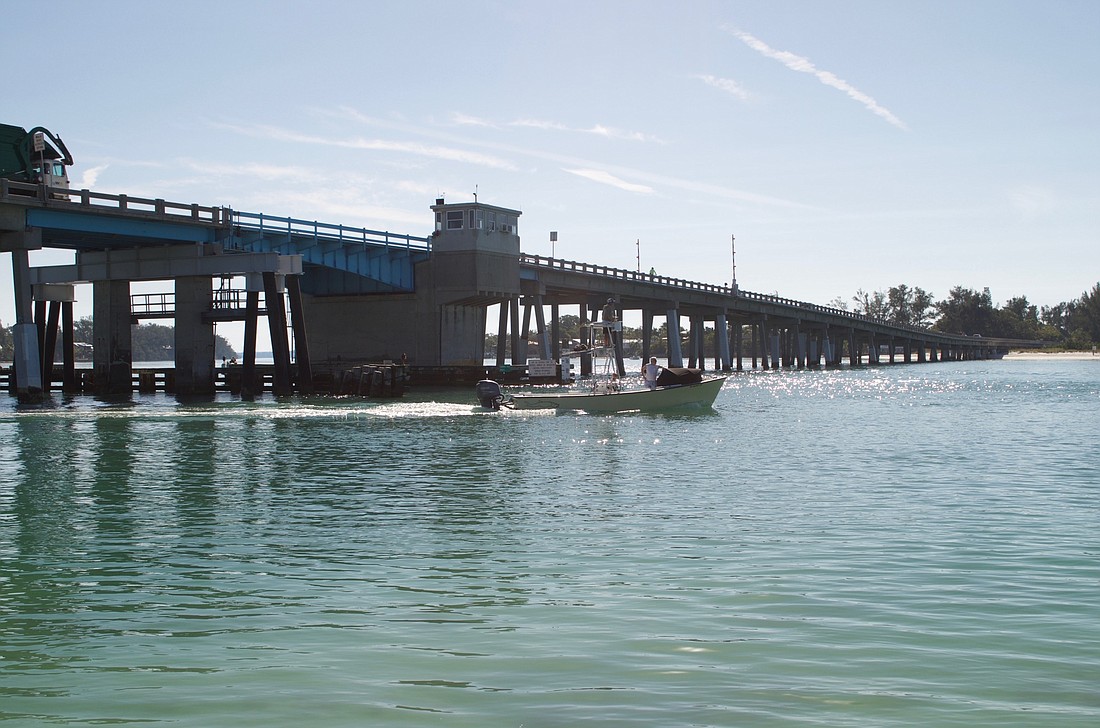- April 18, 2024
-
-
Loading

Loading

With seasonal traffic dwindling, Florida Department of Transportation is gearing up to begin months of work on the Longboat Pass bridge, work that's designed to freshen up the machinery and repair damage done by the elements.
Work on the span between the north end of Longboat Key and the southern tip of Anna Maria Island is scheduled to kick off on June 2 and be wrapped up before the advent of the fall holiday season, said Brian Rick, a spokesman for FDOT in southwest Florida.
Estimated cost: $3.8 million.
There will be times traffic on the bridge will be reduced to one lane and traffic will be halted for short periods, when needed.
Construction workers will coordinate with emergency responders in such cases, officials said, to ensure ambulances or other equipment isn’t trapped in traffic.
Most of the work on the 2,100-foot bridge will be done from a barge and mostly take place between 9 p.m. and 6 a.m.. Also, channel navigation should not be affected, said Project Manager Doug Schallmoser, adding the U.S. Coast Guard has approved the project.
If two lanes need to be closed, it will be for no more than 15 minutes, and typically between 11 p.m. and dawn. There also could be limited pedestrian access during the project.
According to Rick, the work will include:
Rick said workers commonly find other projects to take care of during such extensive work.
A large percentage of the planned work will take place underwater, Rick said, adding that other segments will take place within mechanical spaces and likewise won’t affect traffic.
“Obviously, folks should know it’s going to be a work zone very soon, so even if you don’t see workers present in that respect, they should drive slow and be careful,’’ he said.
The bridge has been standing for 52 years in a harsh climate and needs periodic care.
“It’s something all coastal environments have in common,’’ he said. “The environment is very tough on bridges. If you had a bridge in the middle of the desert, dry as can be, then you wouldn’t have nearly the problem.’’
One other aspect not nearly as common as salty air is more biological. Because bats likely roost under the bridge, crews have had to drape special one-way netting in the beams and supports underneath the structure.
Bats would have an easy time flying out from under the bridge at night but wouldn’t be able to return.
Repairs to the bridge will give it another 10 to 15 years of life, FDOT officials have said.
The bridge is considered safe. But because of the deterioration rates of structural, mechanical and electrical components of the bridge will increase because of where the bridge is located, this project was necessary, FDOT said.
FDOT will begin a study in 2020 to decide whether to do long-term repairs on the bridge, or replace it.